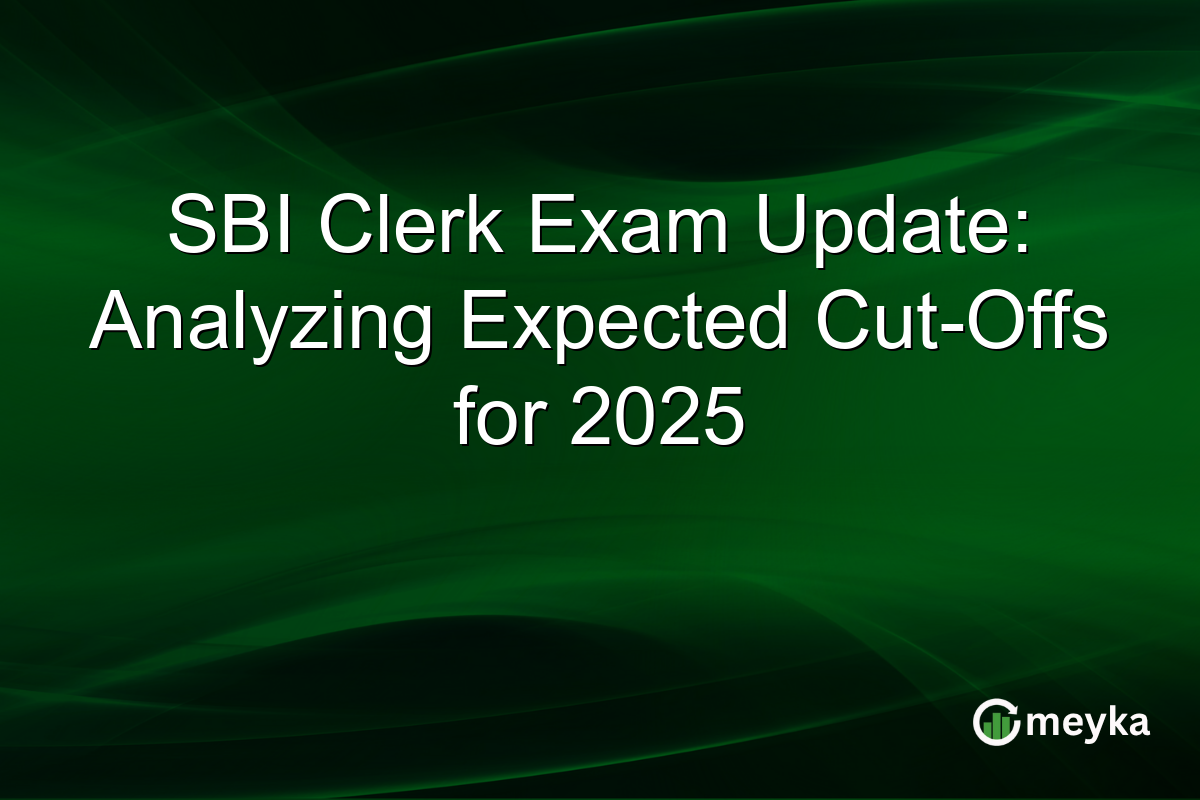SBI Clerk Exam Update: Analyzing Expected Cut-Offs for 2025
With the SBI Clerk Mains 2025 exam recently concluded, candidates across India are eager to know the expected cut-offs. These insights are pivotal as they help contenders understand their standing and prospects. Factors like exam difficulty, the number of vacancies, and category-wise competition influence these cut-offs. Knowing what to expect gives candidates a strategic advantage in planning their next steps.
Understanding SBI Clerk Mains Expected Cut-Offs
SBI Clerk Mains—an important milestone for aspirants vying for the Junior Associate role—requires understanding cut-off trends. Every year, the State Bank of India sets cut-offs based on several factors. This includes exam difficulty, the number of candidates, and recruitment needs.
For the 2025 exam, many are predicting fluctuations due to the revamped question patterns and increased number of applicants. Sources suggest a possible rise by up to 5% in some states compared to 2024, depending on overall performance. Analyzing past trends, we can expect cut-offs to vary significantly across regions and categories.
State Wise Cut-Offs: What to Expect
State-wise cut-offs tend to vary greatly due to demographic and competitive factors. States with a large number of aspirants usually have higher cut-offs. For instance, Maharashtra and Uttar Pradesh traditionally see tougher competition, raising their cut-off expectations.
According to Bankers Adda’s prediction, Maharashtra might see a cut-off around 85-90 out of 200 this year, closely followed by Uttar Pradesh. Meanwhile, states with fewer applicants like Himachal Pradesh may have cut-offs as low as 70-75. Knowing these details helps candidates benchmark their performance relative to their peers.
Impact of Competition and Vacancies
The number of vacancies directly influences cut-off scores. In 2025, SBI announced over 8000 vacancies for the Junior Associate position, a modest increase from 2024. This change might relax the cut-off margin in certain regions.
Moreover, increased applications, especially post-COVID, have intensified competition. The influx is pushing candidates to prepare more thoroughly, potentially driving cut-offs higher. For SC/ST and other reserved categories, the expected cut-off will likely remain lower, offering some relief amidst growing competition.
Preparation Insights for Future Candidates
For future SBI Clerk aspirants, understanding cut-off trends is as important as the preparation itself. Analyzing past cut-offs, focusing on weaker sections, and timely revision are crucial strategies.
Joining online forums and discussion groups can provide additional insights. Platforms like Meyka offer real-time updates and predictive analytics that can enhance strategic exam preparation. Staying informed about expected trends not only boosts confidence but also aids in targeted study efforts.
Final Thoughts
The 2025 SBI Clerk Mains expected cut-offs reflect dynamic examination patterns and intense competition. With varying state-wise cut-offs, aspirants must analyze these trends critically. While increased vacancies may ease cut-offs slightly, high competition levels demand focused preparation. Future candidates should continuously monitor these trends, leveraging platforms like Meyka for updated insights and strategies. Understanding expectations versus reality helps aspirants tailor their study plans effectively, maximizing their chances of success.
FAQs
SBI Clerk cut-offs are influenced by exam difficulty, the number of vacancies, and competition levels among aspirants, varying by state and category type.
State-wise cut-offs differ based on demographics and candidate volume. High-applicant states like Maharashtra tend to have higher cut-offs compared to states like Himachal Pradesh.
Yes, the increase in vacancies can potentially lower cut-offs due to more available positions, but increased competition might offset this effect in competitive states.
Disclaimer:
The content shared by Meyka AI PTY LTD is solely for research and informational purposes. Meyka is not a financial advisory service, and the information provided should not be considered investment or trading advice.






